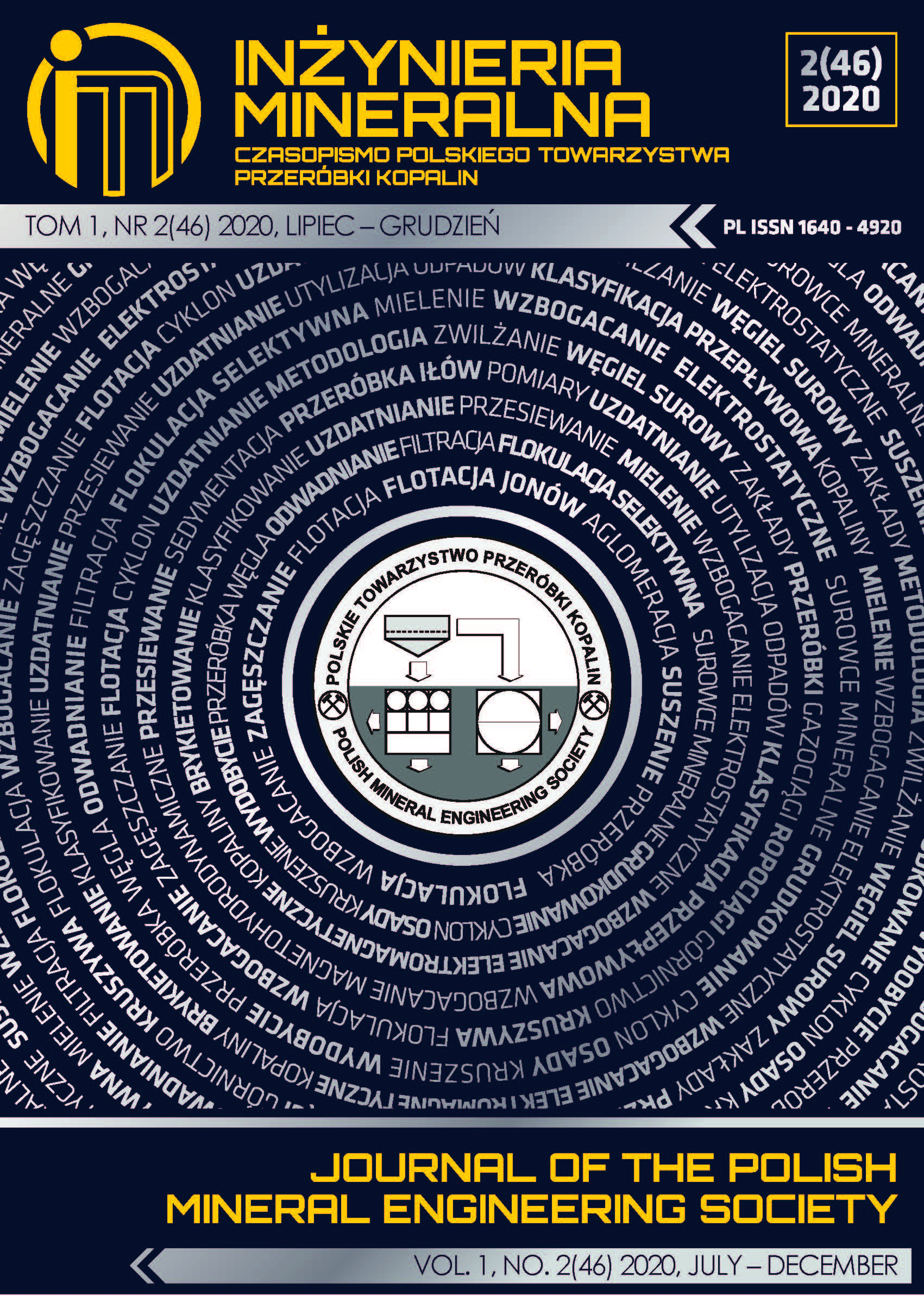Ocena zasobów konkrecji polimetalicznych w rejonie Suoi Thau-Sang Than, północno-wschodnim Wietnamie
Abstrakt
W celu zbadania zasobów konkrecji polimetalicznych zebrano 1,720 próbek substancji chemicznych, minerałów i petrografii z obszaru Suoi Thau-Sang Than w północno-wschodnim Wietnamie. Podobieństwo-analogia w geologii rudy, metoda bezpośredniego oblicza-nia parametrów metalizacji i szacowania zasobów mineralnych w oparciu o metody zmian zawartości granicznej są wykorzystywane do szacowania zasobów konkrecji polimetalicznych w obszarze Suoi Thau, Sang Than i Ban Kep w północno-wschodnim Wietnamie. Podobieństwo-analogia w geologii rudy wskazuje łącznie na 1,785,000 ton Miedzi, 12,005,000 ton Ołowiu + Cynków i 195 kg Żłota. Metoda bezpośredniego obliczania parametrów metalizacji pokazuje łącznie 2 060 000 ton Miedzi, 13,648,000 ton Ołowiu + Cyn-ków i 224 kg Żłota. Te metody pokazują, że obszar Sang Than zawiera głównie konkrecje polimetaliczne na badanym obszarze. Po oszacowaniu zasobów mineralnych na podstawie zmian zawartości granicznej, wyniki oszacowań wskazują na potencjalny zasobów konkrecji Ołowiu - Cynków w Ban Kep i Miedzi w Sang Than, natomiast nie ma potencjalnego zasobu konkrecji Żłota w Suoi Thau i Sang Than, a także w Ban Kep. Wyniki uzyskane z szacowania zasobów mineralnych na podstawie zmian zawartości granicznej są zgodne z wynikami tradycyjnymi metodami bloków geometrycznych. Nasze badanie sugeruje, że obszar Sang Than można uznać za potencjalny zasób konkrecji Miedzi, a obszar Ban Kep jest potencjalnym zasobem konkrecji Ołowiu + Cynków w północno-wschod-nim Wietnamie do przyszłej eksploatacji, natomiast w obszarze Suoi Thau nie ma potencjalnego zasobu konkrecji polimetalicznych. Co więcej, oszacowanie zasobu w oparciu o metody zmian zawartości granicznej przedstawia przegląd perspektyw dotyczących zasobów konkrecji polimetalicznych, wskazując, że metoda ta może służyć jako podstawa do proponowanego wyboru perspektywic-znych obszarów efektywnych Miedzi, Ołowiu-Cynków i Żłota poszukiwanie minerałów w obszarze Suoi Thau-Sang Than w północ-no-wschodnim Wietnamie.
Copyright (c) 2020 Inżynieria Mineralna

Utwór dostępny jest na licencji Creative Commons Uznanie autorstwa – Na tych samych warunkach 4.0 Miedzynarodowe.
Czasopismo pozostawia część majątkową praw autorskich autorowi.
Czasopismo zezwala autorom i zachęca ich do zamieszczania swoich artykułów na prywatnych stronach internetowych oraz w instytucjonalnych repozytoriach. Dotyczy to zarówno wersji przed opublikowaniem, jak i wersji po publikacji. Udostępniając swoje artykuły są zobowiązani do zamieszczenia szczegółowych informacji bibliograficznych, w szczególności (o ile to tylko możliwe) podania tytułu tego czasopisma.







.png)
